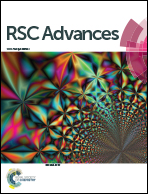Real-time release monitoring for water content and mean particle size of granules in lab-sized fluid-bed granulator by near-infrared spectroscopy
Abstract
Simultaneous real-time monitoring of water content and mean particle size in the powder bed of a fluidized-bed granulator was performed by near-infrared (NIR) spectroscopy through a window, and the findings were used to evaluate the granular properties. A powder mixture containing acetaminophen bulk and additive powders was granulated by spraying with 10, 8.5 and 7.5% binder solutions in a lab-size fluid-bed granulator. Change of water content and mean particle size of the granules during fluid-bed granulation were evaluated by weight loss and sieving of the removed granule samples, respectively. The NIR spectra were recorded during the granulation processes, and calibration models to evaluate water content and mean particle size of the granules were developed based on NIR spectra using the partial least squares regression method. The best calibration models to predict water content and mean particle size were obtained by multiplicative scatter correction treatment. The validation results based on external validation NIR spectra also had sufficiently linear relationships. In the predicted water content–time profiles during the granulation processes, the water content increased in the granulation process, and it decreased in the drying process; the predicted values fitted very well to the actual values in all processes. The maximum water content in the processes using 8.5 and 7.5% binder solutions was around 6–7%, but that using 10% binder solution was around 3%. In terms of the predicted mean particle size–time profiles, they increased during the granulation process, and remained constant during the drying process; the predicted profile fitted very well to the actual values in all processes.


 Please wait while we load your content...
Please wait while we load your content...